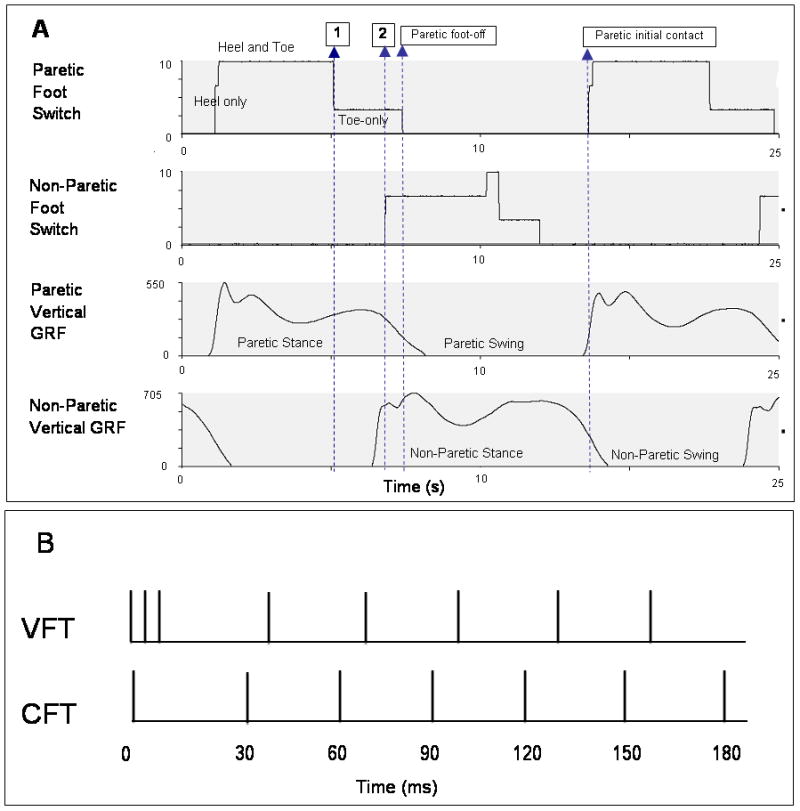Figure 1.

(A) Foot switch and vertical ground reaction force (GRF) data from the paretic and non-paretic leg of one subject. There was considerable variability in the relative timing of the events shown in this figure across subjects. Vertical GRFs were used to identify swing and stance phases of gait. Footswitch signals were used to trigger FES during gait. During each gait cycle, dorsiflexor FES was started at paretic foot-off and terminated at paretic initial contact. Plantarflexor FES was started at paretic heel-off (Arrow 1) for Logic 1 and at non-paretic initial contact (Arrow 2) for Logic 2; and terminated at paretic foot-off. (B) Stimulation train patterns used for FES. VFTs consisting of a three-pulse 200-Hz burst at the start of a 30-Hz CFT were used in this study. Traditionally-used CFTs are shown for comparison.
